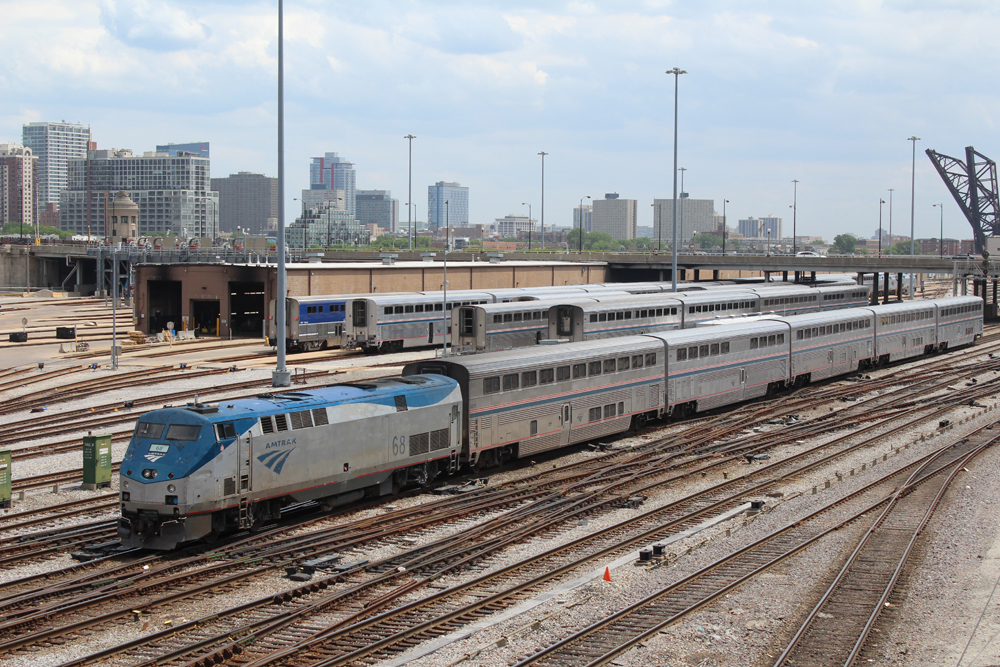
ABOARD THE TEXAS EAGLE — “There is no Sightseer Lounge on this train. Once again, there is no Sightseer Lounge on this train,” emphasized the public-address announcement. “You must buy food to sit in the café car; if you don’t buy food and we see you sitting in the café, we will ask you to return to your seat.”
Another announcement warned passengers not to bring laptops into the car. There was, of course, no “fasten seat belt” sign or announcement, but there might as well have been. The message was clear: passengers were basically expected to stay where they were.
A recent round trip on the Chicago-San Antonio, Texas, train — once nurtured by the home-grown Texas Eagle Marketing and Performance Organization, or TEMPO — showed how service has been castrated from Washington, D.C., by a cost-enamored management and a complicit board of directors.
Decline by degrees
The downsizing began in October 2020 with triweekly frequencies predicated on assumptions, made early in the summer, that in light of the COVID-19 pandemic, ridership and demand for all long-distance trains would be weak for the entire fiscal year. Prepared dining car meals available to all passengers had already devolved into portable meal-in-a-bowl entrees served only to sleeping car patrons, a pandemic-inspired panacea that fit comfortably into communal-spread before a COVID vaccine was available.
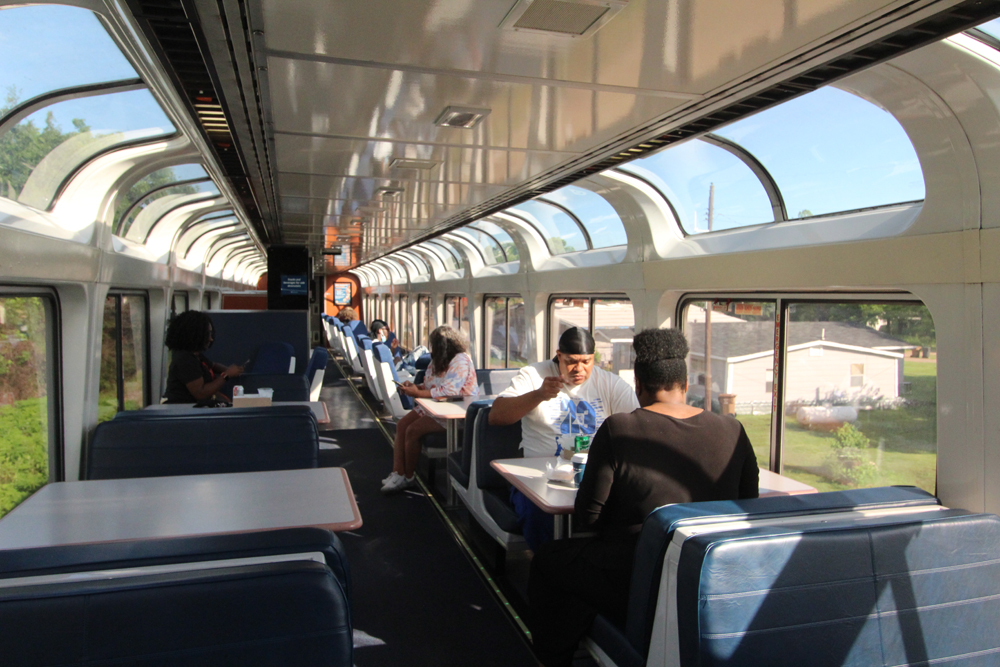
At that time, the Sightseer Lounge cars were sidelined from the Eagle and the Capitol Limited; the official justification was that these were “one-night long-distance trains” whose passengers supposedly didn’t need or want them. The same reasoning was invoked when traditional dining-car service was eliminated in 2019 for all passengers on the Silver Meteor, Crescent, and City of New Orleans, after the debut of “flexible” meals on the Capitol and Lake Shore Limited.
However, the Coast Starlight’s Seattle-Los Angeles trip is only slightly longer than the Eagle’s journey. The City of New Orleans, on a much shorter schedule, has mercifully retained its Sightseer Lounge, in part because Canadian National requires a minimum 32-axle count on a portion of the route to activate signaling. The City has occasionally run with a combination diner-lounge Cross Country Café and an unstaffed Sightseer Lounge (with a “keep out” sign scrawled on a box blocking steps leading to the lower level).
In a 2021 letter to an Eagle passenger, Amtrak claims “retirement of the Sightseer Lounge car … is part of Amtrak’s plan to modernize our fleet of equipment,” though the cars are not being retired. The letter adds, “these determinations were not made lightly and are being implemented wholly with the purpose of ensuring the financial excellence Amtrak requires to deliver intercity transportation into the future with superior safety, customer service, and efficiency.” The writer appears to have borrowed from communications responding to discontinuance of the Starlight’s popular Pacific Parlour Car first-class lounge, a move ordered by then-CEO Richard Anderson in 2018. Those popular but significantly older cars were, indeed, retired.
Ignoring the advantages of space
The company’s characterization of “financial excellence” is telling. A train is capable of providing a quality experience getting from here to there that travelers can’t get anywhere else. That’s because other modes aren’t capable of offering walk-around space and amenities. Air, bus, and highway alternatives effectively either restrict passengers to a seat, require them to drive a vehicle at the expense of being productive, or both.
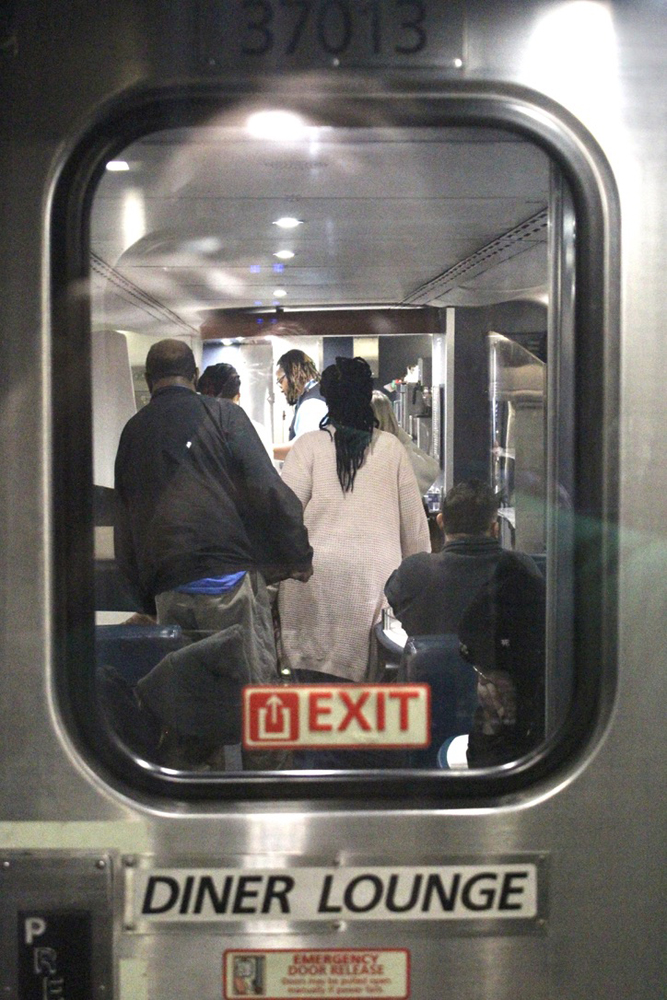
Rail’s drawbacks? In most parts of the U. S., those are comparative convenience and speed. Cars let you leave when you want and allow you to go door-to-door, rather than conforming to a schedule and figuring out how to get from station to destination. Except when traveling to rural or medium size cities, air service is generally fast and frequent. It’s no accident that news reports over the Memorial Day weekend talked about crowded flights and highways, with scant mention of Amtrak.
Today’s Eagle operates with lead service attendant in the café car who, when not manning the counter, is also supposed to serve sleeping car meals on the dining side of the car. Food is heated downstairs by the diner lead service attendant. Neither that person nor the sleeping car attendant are supposed to serve meals in the dining section. In practice, they usually pitch in to reduce customer wait times. Recent reports indicate that on Auto Train, the Capitol, and other services, sleeping car passengers are supposed to eat all meals in their rooms, thus extending onboard sequestration.
The thin staffing and equipment availability extends to Eagle sleeping accommodations, where four rooms are occupied by the onboard service employees. Historically, they occupied space in a separate transition sleeping car, which also provided additional revenue accommodations. With limited inventory, the lone sleeper is often sold out, or its high prices discourage patronage.
TEMPO involvement
Amtrak management is developing its fiscal 2023 operating plan now. If its inflexible handling of national-network equipment and personnel deployment in 2021 and 2022 is any indication, the initial plan will remain etched in stone for the entire year, regardless of revenue-generating opportunities or demand trends that might develop.
The real danger is that the Texas Eagle’s ability to link vibrant rural and mid-sized Southwest communities with Chicago, St. Louis, Little Rock, Dallas, Fort Worth, Austin, and San Antonio is being permanently stymied by its downsizing. Embedded in this route are multiple city pairs Amtrak insists it wants to serve with the “Connects US” 2035 corridor plan — and some it doesn’t care about. Restoring personnel, equipment, and amenities to attract more customers means adding costs, even if the moves enhance the train’s revenue and Amtrak’s relevance.
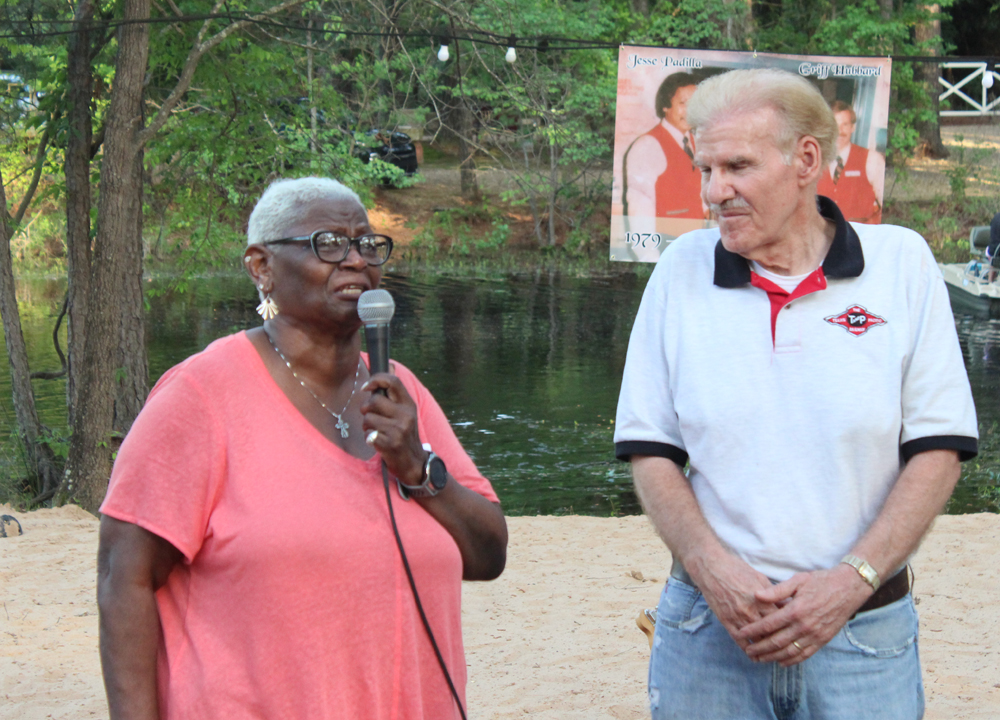
But that’s where the Texas Eagle Marketing and Performance Organization wants to help — again. The Eagle had been on the same management chopping block that claimed the Pioneer and Desert Wind in 1997. Local political activism by civic leaders, the promise of future mail and express revenue, and a state loan approved by Gov. George W. Bush at the urging of Texas U.S. Sen. Kay Bailey Hutchison helped save the Eagle after it had literally disappeared from the May 10, 1997, timetable. In response, the locals formed TEMPO to assist Amtrak in actively marketing the train. The vow at the time: we can’t ever let this happen again.
The group’s contributions included establishing promotional initiatives in online communities and, with the blessing of then-Amtrak president George Warrington, nightly management of inventory to maximize revenue. Dr. Bill Pollard, a Little Rock, Ark., area dentist, voluntarily matched sleeping car pricing to inventory every night for 20 years until Amtrak CEO Anderson ended the practice in 2018.
These stories were recounted recently at a combination TEMPO business meeting and 25th-reunion barbecue, hosted by former Amtrak local revenue manager Griff Hubbard, to celebrate the 80th birthday of now-retired Texas Eagle General Manager Joy Smith.
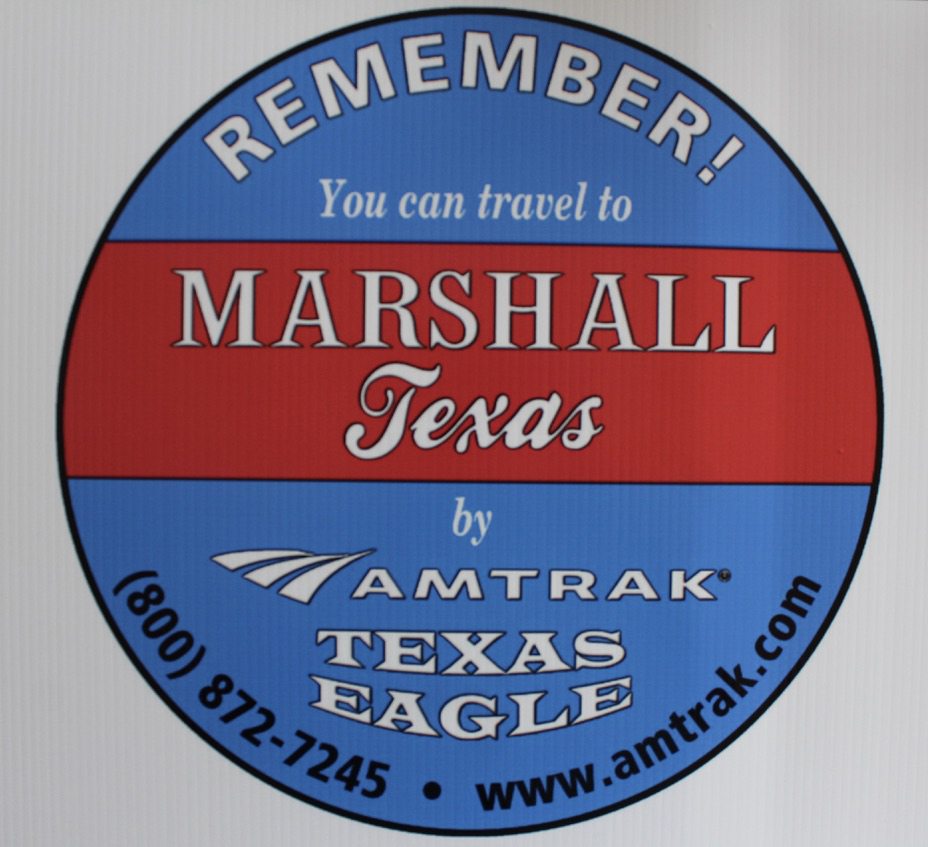
TEMPO member Christina Anderson of Marshall, Texas, unveiled a prototype sign that was enthusiastically received by representatives from other communities, including those along the Heartland Flyer’s route. All agreed more attention to the website in the digital era is required as well. Participants were ready to roll up their sleeves again, but most had a major concern: how can we promote the Eagle experience if capacity remains constricted and the onboard product isn’t right?
The absence of the Sightseer Lounge and quality dining car meals available to coach passengers entered virtually every conversation. Will those current deficiencies become “the new normal?” The jury is still out.
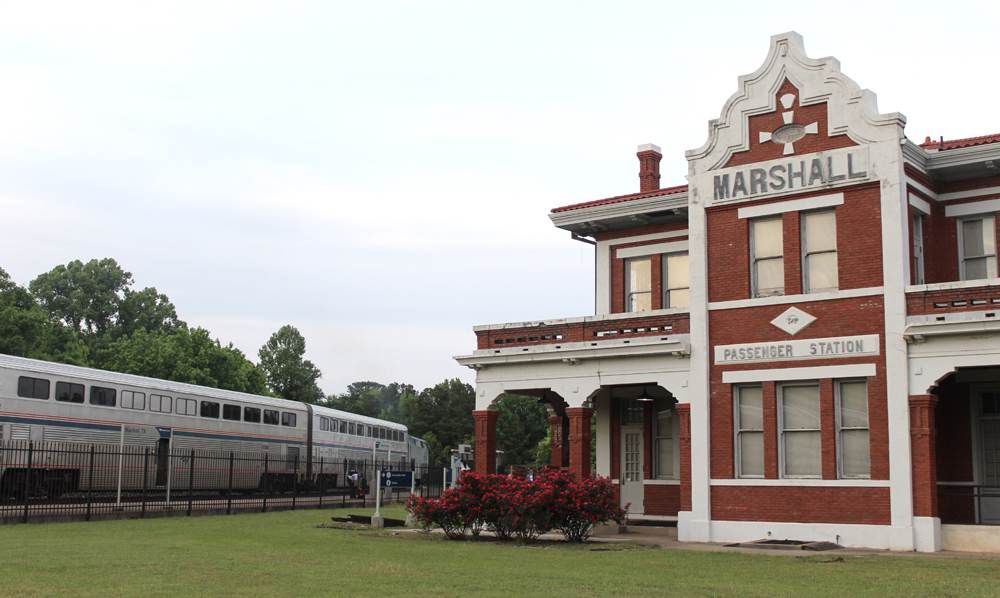








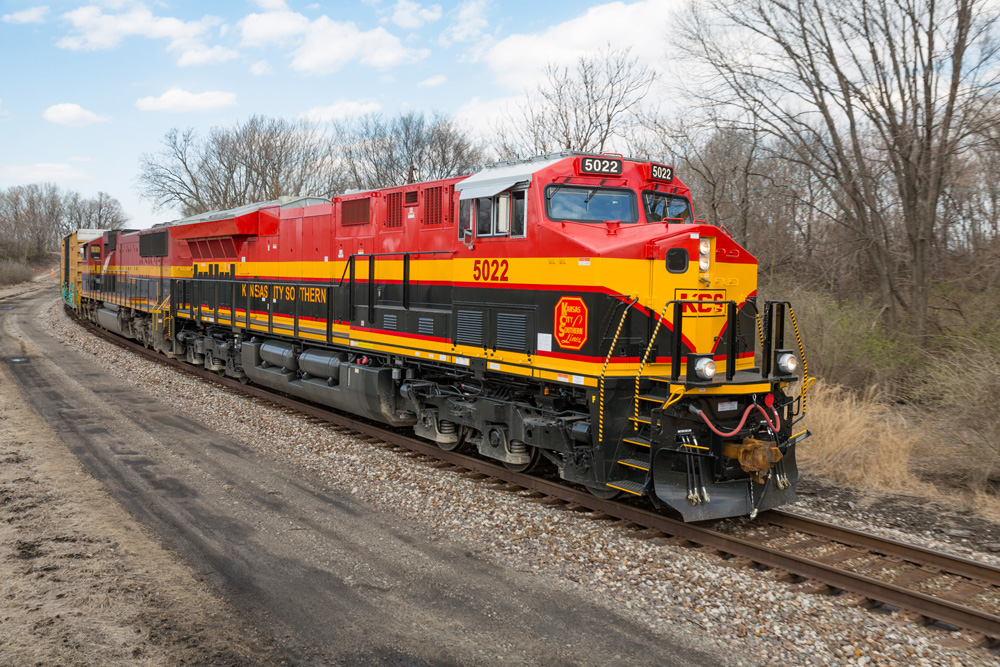
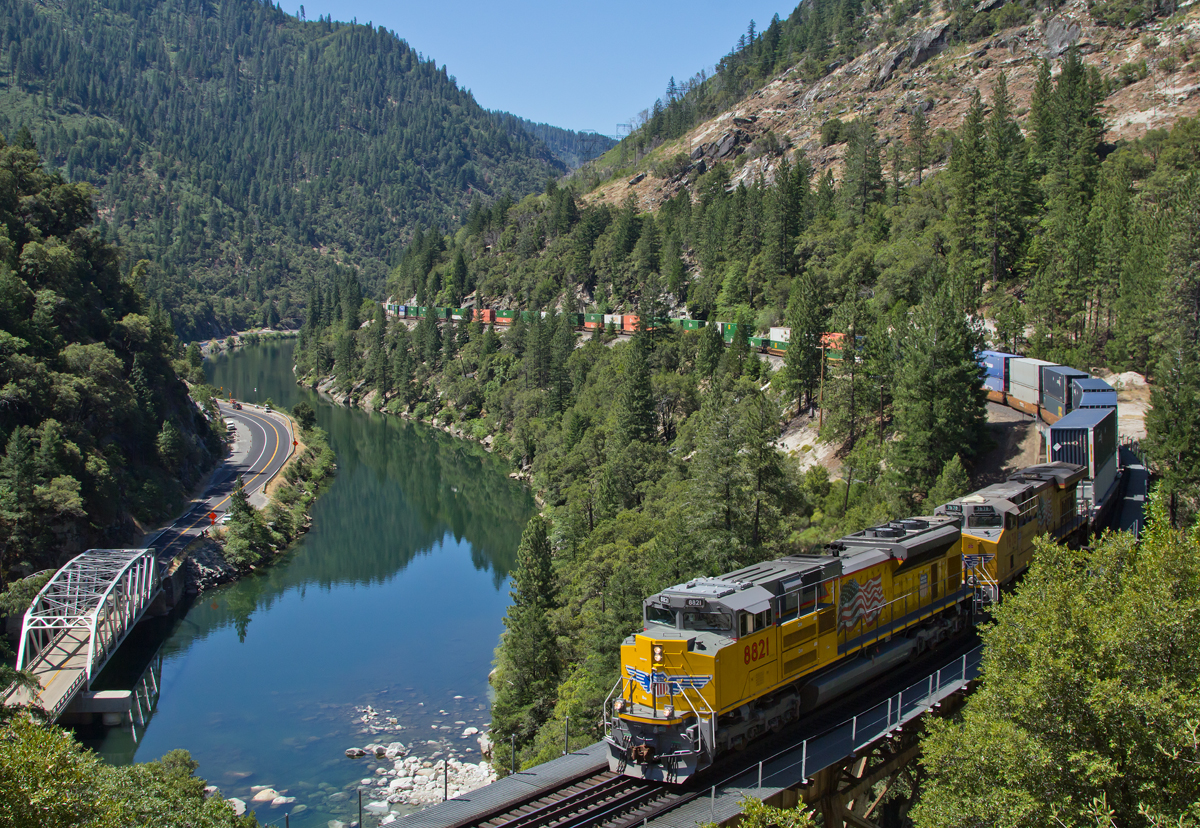




The perfect example proving how little Amtrak cares about their long haul passengers. Texas Eagle customers are the most disliked apparently. This is the only train in the western network to have just one sleeping car, the only train in the west to have no traditional dining, and the only train in the west to have no sightseer lounge car (which is by all means the most stupid decision management has ever made). Management claimed an insufficient lounge availability for it no being on the Eagle, yet a couple of examples seem to make that claim invalidated. The fact that the Winter Park Express, which is more than 15 times a shorter journey than the Eagle has always operated with one and the fact that the Illini, Saluki trains sometimes run with an empty lounge just to fulfill a minimum axle requirement. Though the lack of a sightseer lounge is by far the biggest disappointment on the Eagle, the lack of a transition car is also a big wrong move. Not only does it mean that space in the lone sleeper has to be reserved for OBS employees it also results in no lounge space for onboard crew members, which makes the journey for them undesirable too according to a customer service rep at Dallas Union Station whom I chatted with about the future of the Eagle back in March of this year. There is a sign of hope for this train though. There is the possibility of it regaining it’s sightseer lounge car in July. In the meantime we can only hope that Amtrak will restore this train to it’s once proud state.
After the creation of AMTRAK in 1971 I had the enormous pleasure of taking the Texas Eagle from Houston to Kansas City. At that time the crew in the cars were all former Santa Fe passenger employees.
Naturally, these people were customer oriented and provided excellent service especially the food in the dining car. After an incredible breakfast I could hardly wait to have lunch which again, was a incredible. naturally, I was aware of the fact that in a very short time this level of passenger service would decline due to the implementation of policies by the wizards in Washington DC. All designed to discourage passenger traffic.
Suffered on an Amtrak regional train from Roanoke to Wilmington , Delaware in mid-May and I was simply astonished at the level of service, especially the conductor who was unable to recall stations stops. And the layover in DC
for the switching to electric power featured folks that were reminiscent of the antics of the Marx Brothers. Lazy spelled with capital letters,
Bill Grant
Columbus, OH
This article really resonated with me. I took the Texas Eagle from San Antonio to LA in August of 2021. My 28 hour ride turned into 51 hours as I learned that passenger trains are using Union Pacific rails and have no priority – so the several times we had to wait for someone to clear a freight train off the tracks, caused our crew to time out and added more time. I also learned that ADA is not part of the option for current train travel – having to navigate VERY narrow stairs to access bathrooms or food was most unpleasant and burdensome to other passengers. I learned that train travel has no nonsense rules and are not compromised – not a bad thing in some cases.
Overall I loved the spacious seats that had back reclining and foot rests – the cost was very reasonable versus driving in my own car. I will do this again and encourage my over 60 friends – those with no knee issues or handicaps of course- to enjoy riding the rails. But beware that there are drawbacks and the consumer needs to be prepared – if you NEED to be somewhere at a certain date and time – cross county trains are not the best option in my opinion.
I sure am glad that I rode this train before it was skeletonized. Looks like nothing has changed very much, except that Amtrak management has more money to waste. I assume all the golden parachutes for the executives are in place. “I’ve Been Working on the Railroad” is just a song. Try to remember when was the last time you saw an Amtrak ad on television. And the funeral plans are probably already made. SO SAD!
By know it should be apparent to everyone what was the case when railroads had their passenger service. They began losing money when highways got better and cars more plentiful. Had it not been for regulators service would have ended around 10 years before it did.
A T&P official told me why. “We have to carry to much weight per person and provide a lot of service. You need in addition to engines, a baggage car, diner, coach, and compartment ca, and maybe a sleeper. Autos don’t need that, neither do airplanes, or busses. From what I see and read, nothing has changed. Passenger trains are losers and will remain so. So, either accept the losses, and poor trains or end the service.
From FY17 through FY21 the Texas Eagle has an operating loss of $151.1 million or an average of $30.2 million per year. The high was $35.7 million in 2020; the low was $22.1 million in FY21. In addition, it incurred some residual capital expenses, which Amtrak does not disclose.
Focusing on steps to increase revenue without factoring in the incremental costs is only half the accounting equation.
A component business person would drop the Eagle, along with the other long-distance trains, and concentrate on passenger trains in relatively short, high-density corridors, which is where they make some economic sense.
Mr. Smith, you meant “competent” business person, of course. Look, I understand where you are coming from. But you know, no one ever asks if any road or road segment, be it residential, arterial, or interstate highway pays for itself including all the costs to keep it maintained to a SOGR. We remember that the Highway Trust Fund was, for a time in the early 2000s and maybe still is, needed huge infusions of cash from the “general funds”. My problem with the LDs is that in 50 years things never came together for even a doubling of frequencies on each route, much less route expansions. The Obama administration, that everyone thought would be friendly to Amtrak, did NOTHING to foster good relationships with the host freight railroads and offer PPPs for mainline capacity restorations to right the 80s campaigns that single-tracked many important main lines, like Milwaukee-Twin Cities, Chicago-New Orleans, and Conrail’s Boston Line. That could have set the stage for an expansion of LD frequencies. Like Charles Landey, my feeling is anything less than 2 trains on the route isn’t worth it. Three is really the minimum. When it comes to passenger rail in our times of automobility and high levels of air travel, if we are to attempt a comeback for LDs and short to medium distance services we have two choices; either we go big…or we shut up and go home. And if we as a nation want to “go big”, Amtrak must have a top management using building blocks instead of a wrecking ball.
I understand President Biden has a lot on his plate right now. But Amtrak Joe has done absolutely nothing to restore the long distance or regional trains into something worth riding. Now that we are retired my wife and I looked forward to riding Amtrak around the country. I just can’t justify spending the money for a substandard or worse experience. Very sad situation and I fear it’s only going to get worse for Amtrak.
From all accounts about poor dining service on ‘The Texas Eagle’ and other trains, Amtrak could serve boxed meals prepared by caterers en route as was done by Southern Railway in the 1950s and 60s on secondary passenger trains. The boxed meals served on Southern included three pieces of fried chicken, crinkled French fries and roll. All of the items was cooked with lard and served with iced cold Coca-Cola® in 8 oz glass bottles. This was the daily menu especially on Southern’s daytime locals, Chattanooga – Memphis Train Numbers 35 & 36 served at Sheffield, Alabama (westbound) and Corinth, Missisippi (eastbound) respectively.
The food and Coke were scrumptious and delicious.
This pathetic parody of what rail travel was once, long ago, on a different planet, only proves the reality that Coscia and Gardner have no experience; no interest, in competently running a passenger railroad.
Certainly, how revenue is accounted for distorts the data and decisions for yield management, given only one sleeper and the number of roomettes given up for crew.
Customer Experience is now considered by Amtrak HQ as profane graffiti.
Public health is threatened by the unkept bathrooms and supplies. Surprising how no passengers so disgusted have not contacted the Texas Dept. of Public Health.
Amtrak’s leadership doesn’t care, doesn’t know what to care about, and it shows in all aspects of the “Eagle.”
Apparently, the bonus structure remains in place that corporate management would meet its goals the more costs were cut, as in staff and consists vs. increasing revenues and potential profitability.
Given the exorbitant cost for sleepers, who in their right mind would even contemplate using Amtrak to Texas, west coast, or Glacier? Time for the foamers to remove their pen pocket protectors and get on board to push the facts to Congress and media.
You can bet Coscia would never run his company as pitifully as Amtrak–like a candy store.
Amtrak is just another bloated bureaucracy with the same goal of all government bureaucracies – growth and survival.
Customer service – who does that?
Cost-benefit – what is that?
“Management” – that’s a funny word.
The highway lobby is winning the battle. Ever since they cut trains like the National Limited and several others in 1979 train service has deteriorated to the point that it is useless even though gas is now very expensive. I see this mid term election as a turning point where the rest of the Amtrak haters will get elected and most of the passenger service will stop. Then they can sell the equipment to a nation that actually has a need for it. In America we drive a car and the rest of the world can have our trains and other useless public transit equipment. Just keep the gas prices low.
This on-board service report copied from a public web-ppost and dating from May 2022 speaks volumes to the results for both crew and passengers of the decision to remove (originally they claimed temporarily) the Sightseer Lounge cars from the TEXAS EAGLE. Crews basically stationing themselves in the half of the Cross Country Cafe Car (diner-lounge) that should be for sleeper meals and socializing.
This is a wide-spread Amtrak issue. Trains like the LAKESHORE’s Boston section, with only half the cafe car set with tables (the other end is Business Class seating), the limited number of tables started shrinking with the crew grabbing the four top table closest to the doors. But then attendant also takes the four top closest to the cafe counter and often grabs another table for food/waste storage. Bottom line–of what should be five and a half tables (one table has only two seats to allow for wheelchair access) only two-three tables are generally open for (gasp) paying riders. This car is the only coach passenger food source on the LAKESHORE.
On the TEXAS EAGLE this situation has now become ridiculous. Here’s the trip report:
“This is the first of a four-segment trip Texas to New York City from earlier in May. My Texas Eagle left Fort Worth a bit late, waiting on a late Heartland Flyer from Oklahoma. My sleeper was a Bombardier model with the new bright interior lighting. It was so bright it looked like an operating room in a hospital, with the exception of the grime and filth on wall and floor carpets. The car rode well, and the AVAC and plumbing systems were all in good order. The exterior windows were filthy. The crew members were all quite nice, both operating and OBS. The challenge was that they all congregated in the dining area of the diner/lounge. The so-called ‘sleeper lounge’ could not be used as envisioned or advertised. There was no lounge car, and no dorm car. The crew was housed in the sleeper. Food preparation specialist, coach attendant, cafe car counter person, and the sleeping car attendant all had rooms on the single sleeper.
We experienced a significant delay in suburban St. Louis in the morning due to a downed power line west of the station area. There had been no wind or weather, just a fluke situation. I was to connect with train 50 in Chicago, with a 4 hour layover. We got into St. Louis, and then on into Illinois, running about 150 minutes late. The conductors and OBS staff continued to ‘hold up’ in the diner on the second day. The coach attendant did not seem to ever leave the car. As I walked through the train counting people I also noticed that toilets in the coaches needed paper products. I felt sorry for the passengers there, as the lavatory and toilet areas were nasty. Little or no advance notice was given for station stops, and someone would run to the PA and scream ‘Alton’, or ‘Springfield’ as the train stopped at platforms, and scream again ‘last call for…” With about 90 minutes of layover time still left for me between 22 and 50, our peaceful quiet in the sleeper was interrupted by an profane, obscenity laced young male passenger who had come through the diner from the coaches. He paced from one end of the car to the other, screaming and ranting. Frightened patrons slid their doors shut, and I prayed that no shots would be fired. In his rant, he relayed that he missed his stop at Joliet, and thus his ride on to the airport. The train came to an abrupt stop in Lemont, IL, and was surrounded by the Lemont police. They got the guy off the train and carried him away. I heard the conductor say something to the effect of ‘no way he stays on this train with that behavior’.
What happened to the day when the coach attendant went through the car checking hat checks? What about folding the hat-check upward along the edge of the luggage rack while verbally inviting the passenger to prepare for your next stop? I understand that the young man did not handle the situation, and it got frightening. He showed no emotional maturity. But I could not help wonder if the lazy staff did not contribute to this situation. Could the whole situation have been avoided with competent staffing?
I made train 51 with a few minutes to spare, but it was a long hard trip. Lousy food, no lounge car, and too many delays. I can overlook most of that, but I cannot overlook the ‘crew lounge priority’ that has become common on Amtrak trains. No leadership, no supervision, no accountability, and no discipline. It is a bad picture. I find the crew members to all be nice people. I might be lazy too if I had to work for Amtrak. But Amtrak is bringing self-inflicted wounds to their own operation with this growing cancer of unprofessional behavior. ”
Amtrak really must insist the crew cease to monopolize the public lounge space. One table was bad enough, but half a car is simply absurd.
Back in ye olden days, at least one car on the train would have a little compartment for the conductor to sit at and do their work. I think the pics of the upcoming Avelia Liberty/Acela Liberty trainsets show the train equipped with one. Do the existing Superliners or Amfleets have such a compartment? If not, that sounds like something to add to their replacements. It wouldn’t help with the Cafe attendant needing space, but the other crew members would have somewhere to work without taking up passenger space.
In both law and psychology, a person is presumed to intend the natural and forseeable consequences of his actions.
Given that, it is apparent that Stephen Gardner’s Amtrak intends to sabotage the Texas Eagle (and the Capitol Limited and the Southwest Chief and the City of New Orleans, and probably others as well) to drive off enough customers to be able to justify further downgrades and eventual discontinuances.
Gardner and Coscia know the politicians don’t ride. They know no people of consequence are paying attention to what they are doing. And the Biden administration, with the apparent recommendation of U.S. Sen. Schumer (D-NY), just nominated Coscia to continue as Board chair which means Gardner stays as President and CEO. To both NEC=Nothing Else Counts. So much for “Amtrak Joe”. So after 50+years operation we have two people at the top swinging wrecking balls instead of placing building blocks. And there seems to be no pushback. I knew Amtrak could eventually be done in by the naysayers in Congress, aided by the naysayers like Randal O’Toole at the Right Wing think tanks. I never thought Amtrak would be done in by its own top officers. And the pathetic Amtrak shills at the NARP/RPA and their state/regional affiliates constantly ask/beg for donations but shy away from going to “war”.
Bullseye Mark
Why comment? Bob Johnston has said everything that needs to be said.
I’m on my way to ride the Hiawatha and METRA this morning. Any further than that, Milwaukee to Chicago, I’m done with Amtrak.